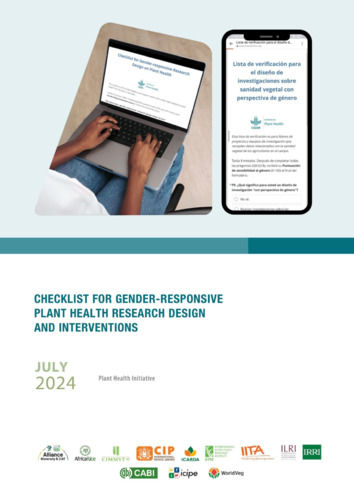Checklist for Gender-Responsive Research Design and Interventions on Plant Health
Abstract
The checklists are designed for project leaders and researchers to apply critical thinking to respond to diverse needs, incentives and constraints of men and women in plant health research and interventions. They are co-developed by CGIAR researchers and partners in Latin America based on their experience and knowledge required.
Each version of the checklist contains 12-18 questions, and it takes approximately 10 minutes to complete. At the end of each section, respondents will receive advice and guidance according to their answers, and a score (0-100) for the gender-responsiveness will be presented at the end. As respondents answer the questions, pop-up messages appear to give guidance on how project teams can make plant health research and interventions more gender inclusive. They will also receive a Gender-Responsiveness Score that reflects the extent to which their current design has integrated gender considerations effectively.
Respondents can answer the checklists again over time to see if they have improved. These features intend to bridge the gap between gender awareness and practical application and to ensure that future plant health research and interventions are equitable and effective in improving the lives and livelihood of all smallholder farmers across the globe.
The checklists are structured similar to survey forms to provide respondents an opportunity to self- examine and reflect on the current state of gender responsiveness in their research or interventions. Designed with clear, easy-to-follow questions, they prompt users to consider various aspects of gender inclusion – from team composition and training to consulting with gender experts and actively including marginalized groups. Aside from questions answerable by "Yes," "No," or "Not sure/Maybe," the checklist also includes open questions that allows respondents to specify details or elaborate on actions they have taken or challenges they faced. They target users and main components of the checklist are described in the following sections.

